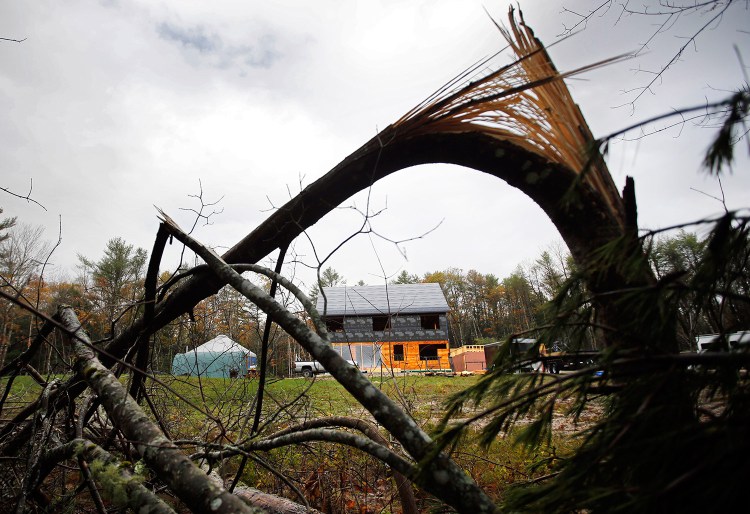Now that power has been mostly restored after a nasty rainstorm packing hurricane-force gusts, scientists are ready to take a look at the impact on forests.
The Maine Forest Service will use aircraft this week for a preliminary look to determine whether a more extensive damage assessment is needed.
The state’s top forestry health official said he’d be surprised if the damage from last week’s storm was anywhere near as severe as the Ice Storm of 1998, when entire stands of trees were flattened. But, there still could be extensive damage.
“From an infrastructure or personal misery point of view, this was very serious,” said Dave Struble, director of the forest health and monitoring division.
This time, it appears that most of the toppled trees were along roads, in backyards and other locations where they were more exposed to high winds, Struble said.
Many were surprised by the extent of outages caused by the storm with wind gusts topping 80 mph. At the peak, nearly 1.5 million homes and businesses lost power in the Northeast. A third of those power outages were in Maine where more than half the population was in the dark. By Sunday evening, utility crews had reduced the number of power outages to about 10,000.
The type of weather phenomenon that caused the damage is called bombogenesis, which is characterized by a sudden drop in barometric pressure, the National Weather Service said.
“It wasn’t all that different from a little hurricane,” Struble said.
The winds tumbled trees that had structural damage and uprooted others. Officials said there were several factors at play: The ground was waterlogged, tree roots were weakened by an earlier drought and winds blew from different directions.
“On the one hand, it did remove or ‘thin’ some of the vulnerable branches and trees by houses, power lines and roadways, so that these trees will not be broken or come down during a winter snow or ice storm,” said Lindsey Rustad, research ecologist in New Hampshire.
But, she added, the storm also could’ve weakened additional “hazard” trees that could fall this winter.
In Vermont, the biggest producer of maple syrup in the country, officials are assessing how much damage the wind storm wreaked on the state’s maple tree forests.
Send questions/comments to the editors.



Success. Please wait for the page to reload. If the page does not reload within 5 seconds, please refresh the page.
Enter your email and password to access comments.
Hi, to comment on stories you must . This profile is in addition to your subscription and website login.
Already have a commenting profile? .
Invalid username/password.
Please check your email to confirm and complete your registration.
Only subscribers are eligible to post comments. Please subscribe or login first for digital access. Here’s why.
Use the form below to reset your password. When you've submitted your account email, we will send an email with a reset code.